How to enable cooling mode on Mitsubishi Electric Air Conditioner?
- RrodrigueztylerJul 29, 2025
To enable cooling mode, turn Dip SW2-4 to ON. Consult “5.1 Dip Switch Functions” in this manual for detailed instructions.
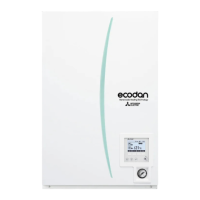
How to enable cooling mode on Mitsubishi Electric Air Conditioner?
To enable cooling mode, turn Dip SW2-4 to ON. Consult “5.1 Dip Switch Functions” in this manual for detailed instructions.
| Brand | Mitsubishi Electric |
|---|---|
| Model | ECODAN EHSC Series |
| Category | Air Conditioner |
| Language | English |
Precautions that must be observed to prevent injuries or death.
Precautions that must be observed to prevent damage to the unit.
Specific warnings for split models regarding refrigerant handling and installation.
Specific cautions for split models regarding refrigerant pipework and materials.
Details the components of the Mitsubishi Electric Air to Water heat pump system with hydrobox.
Explains the vapor-compression cycle of the heat pump for heating and DHW.
Describes the Flow Temperature Controller (FTC4) and its role in managing system temperatures and efficiency.
Lists technical specifications for various Ecodan hydrobox models.
Identifies and labels the key internal components of the hydrobox units.
Illustrates the physical layout and connection points of the hydrobox units.
Shows which outdoor units are compatible with different hydrobox models.
Illustrates the water flow and component connections within the hydrobox system.
Depicts different system configurations for 1-zone and 2-zone temperature control.
Covers preparation steps, safety measures during service, and general installation precautions.
Covers transportation, suitable locations, thermostat placement, and repositioning the hydrobox.
Detailed steps for securely mounting the hydrobox unit to the wall using the provided back plate.
Covers requirements for water quality, anti-freeze, and system flushing before installation.
Details on connecting water pipes, including hot water, drain, and insulation.
Instructions for installing refrigerant pipework for split models, including precautions and tools.
Guidelines for performing electrical connections by qualified technicians.
Explains the function and default settings of each dip switch on the FTC4 control board.
Details on connecting various input and output signals and thermistors to the FTC4.
Lists and describes the output terminals and their maximum current ratings.
Provides wiring instructions for setting up a 2-zone temperature control system.
Steps for configuring the system for a Domestic Hot Water (DHW) tank, including valve and thermistor connections.
Explains various options for connecting remote controllers and thermostats for system control.
Instructions on how to use an SD memory card for simplifying settings and storing operating logs.
Describes the main controller's parts, screen icons, and menu structure for system setup.
Guides on setting initial system parameters like date, time, language, and sensors.
Controls for DHW heating modes (Normal/Eco) and Legionella prevention settings.
Settings for prioritizing DHW, managing heating/cooling modes, and compensation curves.
Configuration for holiday mode and setting daily/weekly schedules for heating, cooling, and DHW.
Access to advanced functions for installers and service engineers, protected by a password.
Covers manual operation, auxiliary settings for pumps, heaters, and mixing valves.
Settings for mixing valve, pump speed, and primary heat source selection.
Controls for freeze protection, simultaneous operation, and cold weather functions.
Adjusts heating flow temperature, room temperature, and floor dry up function.
Configures external inputs and manages password protection for service menu access.
Resets system settings to factory defaults and manages SD card data.
A checklist of essential checks to be completed before system commissioning.
Table of common fault symptoms, possible causes, and solutions for the hydrobox.
Lists and explains various error codes, their causes, and recommended actions.
Details on annual servicing requirements and procedures for draining the hydrobox.
A record sheet for engineers to log field settings and commissioning data.
Continuation of the engineers' record sheet, detailing parameters and default settings.
A logbook for recording routine maintenance activities performed on the hydrobox and outdoor unit.
Refers to outdoor unit manuals for refrigerant collection procedures.
Explains how the boiler functions as a backup for heating operation.
Information on using the hydrobox as a slave unit for controlling multiple outdoor units.


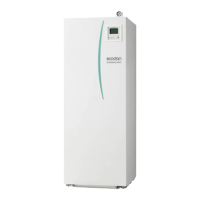
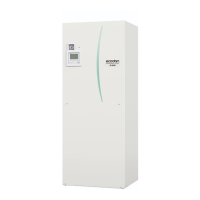





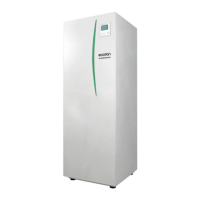

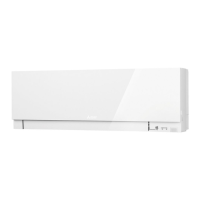
